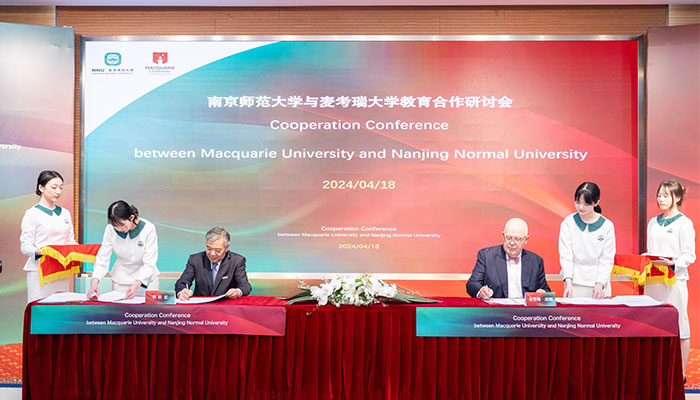An Australian research team has shown that smartphones can be reconfigured as cost-effective, portable bioanalytical devices, with details reported in the latest edition of the Open Access Journal ‘Sensors’.
The team, from the Centre for Nanoscale BioPhotonics (CNBP), an Australian Research Council (ARC) Centre of Excellence, created a simple, portable and economic biosensing device that allows for immediate diagnostic testing of arthritis, cystic fibrosis, acute pancreatitis and other clinical diseases.
Made up of little more than a tablet, smart phone camera, polarizer and a box, the device is based on well-established principles of fluorescent microscopy, whereby specific substances in a sample are tagged with a dye, which then light up or ‘fluoresce’ in a precise manner when ‘excited’ or illuminated with a high intensity light.
Ewa Goldys, CNBP Deputy Director, Professor at Macquarie University and author of the work explained, “In this instance, the process involved the successful testing of biological samples for levels of Trypsin and Collagenase, clinically relevant biomarkers found in high concentration in many human diseases.”
“The samples were placed on the tablet which provided the light, a polarizer sat on top of the samples to help separate the tablet light from the emission from the samples. This was then photographed by the smartphone, with the result obtained by analysing the colour and intensity of the image pixels.”
The researchers believe that the device has enormous potential for use in point-of-care medical diagnostics, particularly in remote or developing areas where professional and expensive research laboratory equipment is unavailable.
Goldys explains, “This type of fluorescent testing can be carried out by a variety of devices but in most cases the readout requires professional research laboratory equipment, which costs many tens of thousands of dollars. There is a need to develop easy to use, portable and affordable systems, as this is preferred for point-of-care applications.”
“What we’ve done is develop a device with a minimal number of commonly available components. Specialised software is not required and setting up the standard commercial tablet and smartphone is very straightforward. The results can be analysed by simply taking an image and the readout is available immediately.”
Goldys believes that we will see rapidly increasing use of smartphone technology in the field of biomedical diagnostics, particularly in resource poor areas.
A free application to convert your smartphone into a bio-sensing readout device will be available for download from the Centre for Nanoscale BioPhotonics web site - www.cnbp.org.au/smartphone_biosensing.
Research paper available: http://www.mdpi.com/1424-8220/15/5/11653/html
The team, from the Centre for Nanoscale BioPhotonics (CNBP), an Australian Research Council (ARC) Centre of Excellence, created a simple, portable and economic biosensing device that allows for immediate diagnostic testing of arthritis, cystic fibrosis, acute pancreatitis and other clinical diseases.
Made up of little more than a tablet, smart phone camera, polarizer and a box, the device is based on well-established principles of fluorescent microscopy, whereby specific substances in a sample are tagged with a dye, which then light up or ‘fluoresce’ in a precise manner when ‘excited’ or illuminated with a high intensity light.
Ewa Goldys, CNBP Deputy Director, Professor at Macquarie University and author of the work explained, “In this instance, the process involved the successful testing of biological samples for levels of Trypsin and Collagenase, clinically relevant biomarkers found in high concentration in many human diseases.”
“The samples were placed on the tablet which provided the light, a polarizer sat on top of the samples to help separate the tablet light from the emission from the samples. This was then photographed by the smartphone, with the result obtained by analysing the colour and intensity of the image pixels.”
The researchers believe that the device has enormous potential for use in point-of-care medical diagnostics, particularly in remote or developing areas where professional and expensive research laboratory equipment is unavailable.
Goldys explains, “This type of fluorescent testing can be carried out by a variety of devices but in most cases the readout requires professional research laboratory equipment, which costs many tens of thousands of dollars. There is a need to develop easy to use, portable and affordable systems, as this is preferred for point-of-care applications.”
“What we’ve done is develop a device with a minimal number of commonly available components. Specialised software is not required and setting up the standard commercial tablet and smartphone is very straightforward. The results can be analysed by simply taking an image and the readout is available immediately.”
Goldys believes that we will see rapidly increasing use of smartphone technology in the field of biomedical diagnostics, particularly in resource poor areas.
A free application to convert your smartphone into a bio-sensing readout device will be available for download from the Centre for Nanoscale BioPhotonics web site - www.cnbp.org.au/smartphone_biosensing.
Research paper available: http://www.mdpi.com/1424-8220/15/5/11653/html



